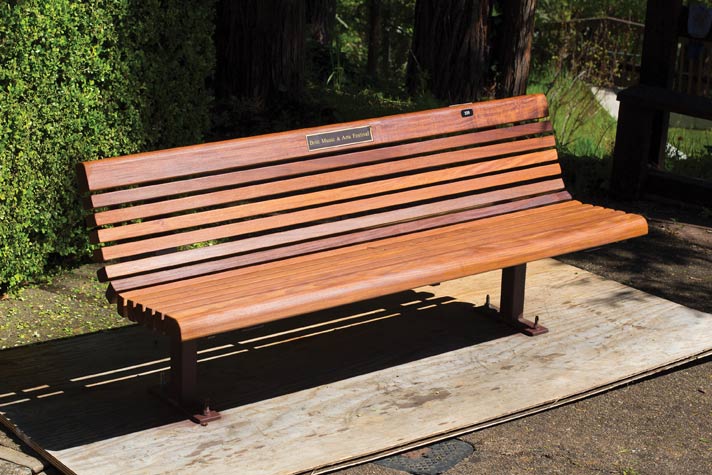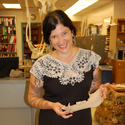Digging Jacksonville – June 2018
We all know that the Britt hill is steeped in history. As such, every time construction projects are planned, archaeology is an important first step. I had a conversation with Jeff Applen of Sore Foot Archaeology, who served as the archaeologist for the Britt Festivals’ most recent project. After the planning stage and before the backhoes were brought in, Jeff and his crew excavated 12 archaeological units (a more science-like way to say “hole”) across the property to see what might be encountered underground. The new seating was slated to be in a section of the park previously unexplored by archaeologists, so there was the chance that archaeological deposits pre-dating the musical festival could be found. In order to pinpoint areas that could be the most interesting, Ground Penetrating Radar (better known as GPR) was used across the construction area footprint. GPR can show archaeologists where buried features (old building foundations, etc.) and areas of historical disturbance (such as old garbage piles) might be, which can help target hot spots and limit the amount of holes you have to dig (saving money, time, and your chance for blisters).
Luckily for the project, no new archaeological sites were found. The results of Applen’s work mirrored previous excavations by the Southern Oregon University Laboratory of Anthropology (SOULA), which indicated that the soils were shallow in spots along the hill, and the lower part of the festival grounds consisted of deep fill brought in to make more level area for the modern use of the property. Even though they didn’t find anything in advance, Applen, along with his assistant Greg, were on-site during the construction to make sure nothing was turned up by the back hoes. All-in-all, they just found a few artifacts and some modern rubbish.
While this might make it seem like the archaeology was done in vain, it absolutely wasn’t. In addition to the fact that they could have encountered something significant, (we have several times in the past) absence of evidence is not evidence of absence. In fact, we have been studying the larger Peter Britt homestead for so long that the fact that little was encountered still provides us with information about how Britt and his family used the property historically. Much of this part of the homestead was terraced, and there was a large barn, (in front of the stage where you walk in) an apiary, (roughly by the ticket booth) and a house on the corner where First and Fir streets meet (the remains of which are deeply buried under that fill we were just talking about). As we piece together more information about the homestead, we can use the results of this work to narrow down areas of interest—we know there were several other buildings on the property, along with vineyards and other improvements to the land. We also know from archaeology that the Britt hill was used by people for a very long time before Peter Britt and his camera ever rolled into Southern Oregon. As the Britt Festival grounds are improved so they can continue to serve the people of the Rogue Valley and beyond, it is important that we honor the past and value the history of that place. So remember the next time you sit back under the stars with a glass of local wine and enjoy live music, that you are part of history. Sitting in a place where people have been drawn to for hundreds of years… Can you blame them?

 Chelsea Rose is an historical archaeologist who specializes in the settlement and development of the American West. Chelsea and the Southern Oregon University Laboratory of Anthropology (SOULA) conduct archaeology across Oregon and have done several projects in Jacksonville. You can reach Chelsea at rosec@sou.edu and follow SOULA on
Chelsea Rose is an historical archaeologist who specializes in the settlement and development of the American West. Chelsea and the Southern Oregon University Laboratory of Anthropology (SOULA) conduct archaeology across Oregon and have done several projects in Jacksonville. You can reach Chelsea at rosec@sou.edu and follow SOULA on